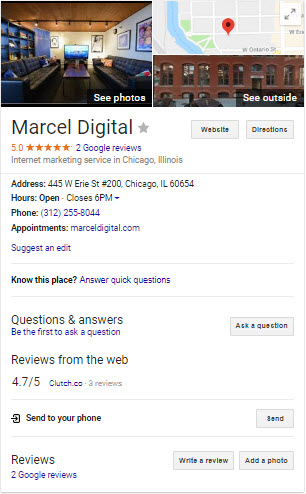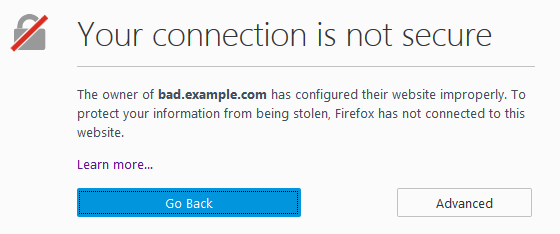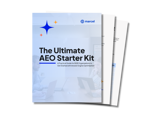In-depth studies reveal that over 50 percent of web traffic comes from organic searches alone. As users input their search queries, only the websites with the best SEO strategies enjoy visibility at the top of search results. Although posting great content infused with popular keywords is at the heart of the website optimization process, competing for the top of search results requires a comprehensive approach.
With Umbraco, you have the power to optimize your website using the most effective SEO tactics available today. As an open-source Content Management System (CMS), Umbraco offers a streamlined user experience to help you approach the optimization of your website with confidence. Utilize this informative guide to begin optimizing your website to capture your fair share — or more — of the web traffic for your industry and location.
On-Page SEO
On-page or on-site SEO refers to optimizing web pages to improve their ranking in web search engines and gain more organic traffic. On-page SEO is concerned with optimizing headlines, HTML tags, and images.
Consider some of the website optimization categories that Umbraco users can experience.
Title Tags & Meta Descriptions
A concise yet descriptive title tag acts as a headline that informs the user what the search result is about. The title tag must also feature SEO keywords to help the webpage reach a high ranking in search results. Since Google search results typically only display up to 60 characters, you should limit your words while conveying enough about the page to entice the user to click through.

When you create and promote shareable content on social networks, the title tag will typically appear at the top of the linked content. You can increase the likelihood of readers clicking through and sharing your content by using language that evokes emotion or interest in creating this tag.

Access the SEO Starter Kit from our Umbraco experts to get started today! You can edit your meta descriptions with our kit as well.
The search results page displays the meta description text below each title tag. The meta description provides additional insights into the information on the associated webpage. The content should effectively advertise what the page has to offer readers.

You can write and post your meta description for each page using your target keywords to help drive traffic, as long as you keep your readers’ needs in mind. Google may pull alternative text for your meta description if the user needs an exact answer to a precise inquiry and the information is available on your page.
Check out this great resource on meta descriptions.
Leverage Alt Text and Schema
You can leverage the use of alt text and schema tags to improve the performance of your website in search results. Alt text in the code of your website helps describe images to visually impaired users and search engines alike. With screen readers, visually impaired users hear the alt text as a description of the image to improve their web-browsing experience. Search engines use keywords in the alt text to categorize and index the images for improved search rankings.

Adding schema tags to the code lets you use rich snippets below the title tag in your search results. These tags help improve reader engagement by providing extra information to the user, such as your business information, contact information, publication date, star rating, and the total number of reviews.
Read this document to learn more about schema tags and their capabilities.
Focus on Keywords and Searches
The most valuable keywords have the highest impression, click-through, and conversion rates, but you need to identify those words and phrases before you can work them into your content. You can assess the value of a keyword to determine how well it could help your webpage perform by using research tools.
Once you have a keyword for each webpage or post, you can optimize your content using that word or phrase. Do not focus on keyword density alone, as search algorithms focus more on great content than a high percentage of keywords. It would help if you continually analyzed how your keywords perform with a tool like Moz Pro or SEMRush, and made changes as you go to increase the ranking of your website.
Looking for ways to expand your keyword research efforts and content marketing? Check out this great keyword research guide and content marketing guide.
Use Internal Links
Internal links connect one page on your website to another to build your site architecture. Since web crawlers move through the content, not navigation bars, to find all pages on your site, internal links are vital to this process. Until the crawlers can access every page and post on your site through internal links, all your keywords and other SEO efforts will have zero impact on the inaccessible pages.
The internal links should only point to pages with excellent content related to the topic to provide more value for your site visitors. You can link the pages using keywords as anchor text to boost your web page's SEO value.
Learn more about internal links.
Headers (H1, H2, H3, etc)
Header tags are used in HTML code to separate headings and subheadings on a page. They rank in order of importance, with H1 being the most important, H2 the next, and so on through H6.
Properly formatted headers are important for SEO because they help search engines understand your content. They also make the content more readable and accessible to the person visiting the page. The average reader may like to scan through content on a page to get an idea of what it is about before committing to reading it.
Technical SEO
Technical SEO refers to website and server optimizations that help search engine spiders crawl through and index your site more effectively. This category of optimizations is related to the behind-the-scenes structure of your website instead of the actual content.
Technical SEO is concerned with making your web pages easily discoverable, organized, and prominently displayed in search results. Consider some of Umbraco’s features that fall into this category of SEO tools.
Use Canonical Tags
Duplicate content decreases your site's ability to rank high on search results pages, so it is important to use canonical tags to mark your master copy effectively. By identifying your master copy of the webpage, you can effectively decrease the impact of duplicate content from similar URLs.
Even if you always create unique content for your site, as is best practice for SEO purposes, website code could allow multiple paths to the same content and trigger a duplicate content flag. So, it is important to implement canonical tags to eliminate this risk.
You can learn more about canonical tags and install them in the Umbraco content editing interface!
Create and Update XML Sitemaps
With the creation of XML sitemaps, you can tell Google your content is up to the standards needed to index the pages on your website. As web crawlers analyze information on your website, a content grade determines how well your pages will perform in the search results for your target keywords.
To keep your content grade high, only add pages with excellent landing page content, not utility pages for specific tasks. You should regularly update your XML sitemaps as you add more quality content and internal links to your website to keep all pages performing as expected.

Check out the XML sitemap extension for Umbraco that our crack team of Umbraco developers created!
Noindex and Nofollow
Noindex and nofollow are useful settings in the SEO world. Low-value content may be searchable through something other than a popular search engine, and adding these pages may lower your site's authority. Umbraco provides per-page settings to establish these flags where needed easily.
A noindex setting means the page will not be indexed and reachable from a search engine. This may be done to prevent duplicate content from appearing in search results, and it may be useful to hide utility pages – like admin, login, or thank-you landing pages – from search engine results.
A nofollow setting means that the search engine is instructed to ignore a particular page link regarding ranking, which may discourage spam and low-quality links.
404 Broken Links
A standard 404 error is returned when a page is requested but cannot be found. This may occur when a link is created from one page to another, but the destination page is later moved. Umbraco can help provide a better user experience by continuing to serve up the 404 status code for the benefit of website crawlers but displaying a more helpful and customized landing page for the user.
Hreflang Tags
Hreflang is an HTML attribute used to specify a web page's language and geographical target. You may have multiple versions of the same page for different languages or locales. The hreflang tag tells search engines like Google about these variations and helps identify which one should be served based on the user.
Choose WWW or Non-WWW
As it is an accessible replacement for IP addresses, the URL should provide readable, helpful information to the user in 2,083 characters or less. In creating the URL for your website, you will need to choose between a WWW or non-WWW structure to optimize your listings in search results pages.
If you choose one, stick with your selection to avoid confusion for your readers and web crawlers. You can elect to use both, but you must use canonical tags to mark the master copy of your page. Otherwise, your website could be penalized for duplicate content, causing your search rankings to decrease considerably.
Secure Your Site (HTTPS Support)
All non-HTTPS sites are labeled as not secure by Google to increase internet security. With this designation, all visitors to your website will receive a warning that your site is unsecure. Therefore, you should secure your website by switching to HTTPS or SSL to avoid decreasing traffic.

With this switch, all information on your site is encrypted during its exchange with the web browser. The increase in security on your site helps to improve its credibility and SEO rankings so that you can reach your marketing goals. The change to HTTPS will also improve the user experience by keeping your site visitors' data safe from packet sniffing and other data interception methods.
Tracking and Performance
Install Google Tag Manager and Search Console
Google Tag Manager and Google Search Console allow you to infuse your content with SEO tags and oversee the performance of your SEO strategy, respectively. With Tag Manager, you can update or add code snippets or SEO tags to pages on your website without notifying your developer. The tags help bring traffic to your website through organic searches by people interested in learning more about that topic.
Search Console provides a full overview of how each page on your site performed. You can review organic searches, referrals, queries, and other key metrics to measure the success of your SEO campaign. Both products are free from Google and will help streamline how you promote your content and review your results. Download and install them at the beginning of your website optimization journey to have the tools you need for success.
Learn how to set up and install Google Tag Manager and Search Console for Umbraco.
Add Google Analytics
Google Analytics can be installed on any website, providing useful insights and metrics. For example, you can see how many visitors a web page gets and how long users spend on your website.
Responsive Design
A responsive design approach means that the development of the website should respond to the user's behavior and environment. This may require extra coding and styling so that content is arranged in a layout system that can be displayed appropriately on the visitor's device – a large monitor, a laptop screen, or a mobile device.
One of the benefits of Umbraco is that it is open-source and platform-agnostic, which means that you are free to make whatever customizations to your theme or design you need.
Optimize Your Site's Speed and Performance
The speed and performance of your website can be dialed in to prevent your users from waiting for the page to load. Optimizing your site's performance improves the user experience, decreases bounce rates, and increases conversion rates.
The metric speed measures how fast your computer receives the first byte from the servers hosting your website. You can optimize speed and performance by enabling file compression to decrease file sizes for text and graphics but not your high-quality images. Decreasing redirects, setting up browser caching, and optimizing images can all go a long way in increasing the load speed of your web pages.
Core Web Vitals
Core web vitals are metrics related to page loading speeds, responsiveness, and visual stability. Google considers these measurements to rate a webpage’s overall user experience. The three components measured are:
- Largest Contentful Paint – How long it takes for the largest visible content block on the page to load. In other words, it measures the loading speed of the page.
- First Input Delay – The interactivity time between user actions and the browser’s response.
- Cumulative Layout Shift – How stable the page is as it loads. If page elements move around a lot as a page is loading, it may lead to users tapping somewhere they did not intend.
What Makes Umbraco SEO Friendly?
Search engines are one of the main drivers of traffic to websites. So, playing nicely with them – and giving them what they want so they appropriately categorize and rate your pages – is key. Umbraco is an SEO-friendly CMS because it supports search engine optimization in various ways.
An SEO-friendly CMS like Umbraco will possess features that support optimization using the following:
- On-page SEO
- Technical SEO
- Website performance tools
With such powerful and diverse tools at its disposal, it’s no wonder that Umbraco is used by top companies like Microsoft, McDonald's, Mercedes-Benz, and Amnesty International – as well as more than 730,000 other websites worldwide.
Conclusion
By utilizing these best practices to optimize your website, you can work toward increasing your page rankings on the leading search engines. The intuitive SEO packages in Umbraco (like our SEO Starter Kit) allow you to easily apply these practices and breeze through the site optimization process. Our system's flexibility allows you to calibrate your user experience to reach your goals best.
As a marketer and website owner, your goal is to get as much visibility for your website as possible so users will engage and convert. In this white paper, we discussed achieving that goal through a strong SEO strategy and some tactics you'll need to get you there.
Our key takeaways:
- Discuss your business goals with your team
- Research the searches your prospective customers are conducting
- Strategize with your team
- Consider an SEO audit
- Optimize your website and offsite channels using the best practices above
- Continue to build strong content to attract prospects
- Measure and report
- Fine-tune and tweak
The above should be your first steps toward creating an SEO strategy that is continually tracked and tweaked as your prospect and search best practices change – these should be conducted by an SEO professional, a step that we strongly recommend to stay ahead of your competition.
As always, if you have questions, we would love to hear about your project and begin brainstorming how our Umbraco Masters and Professionals can help make your website an SEO powerhouse!
The Ultimate AEO Starter Kit
Download our free AEO (Answer Engine Optimization) kit and learn how to make your business the answer in AI-driven search.

Frequently Asked Questions About Umbraco
Does Umbraco have built-in SEO features?
You have full control over the SEO capabilities of content created using Umbraco. These SEO features include front-end design and markup tools that affect on-page SEO scores, and they also support technical SEO features that allow web admins to structure their sites so that they play nicely with search engines.
Can I add third-party SEO plugins to Umbraco?
Yes, Umbraco allows third-party plugins to be installed on your website. These are called packages and are managed in the backend package manager, and packages can save you months developing your tools.
How does Umbraco's URL structure affect SEO?
In Umbraco, the URL structure is quite simple. It follows the content tree structure using descriptive words, not random letters, and numbers. You also have the option to customize the URL of a specific page. While it may not greatly impact ranking, it is possible to include keywords in the URLs to make them more meaningful to humans.
Is Umbraco mobile-friendly?
The Umbraco CMS allows users to create clean, responsive web pages using a grid layout system. This means that a website will look attractive on whatever size screen it is viewed from – a large TV, laptop, or mobile device.
How does Umbraco's caching functionality affect SEO?
Umbraco’s caching functions allow for improved page loading. Since page speed greatly affects website performance, this feature supports high SEO scores and a great user experience.
How does Umbraco handle site speed and performance?
Umbraco CMS provides functions for improving site speed and performance. The key to performance gains is implementing various tweaks in the CMS itself – like minimizing CSS and JavaScript and implementing browser caching.
Can Umbraco be used for multilingual websites?
Umbraco natively handles multilingual content across all websites. Language variants allow you to have localized content all under the same project.
SEO
Umbraco
About the author
Joe Stoffel
Joe knows what it takes to drive SEO results. He is an experienced SEO specialist who currently leads the SEO department and strategy at Marcel Digital.